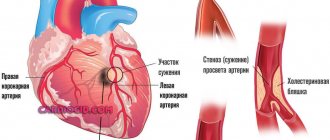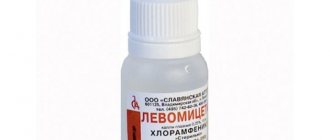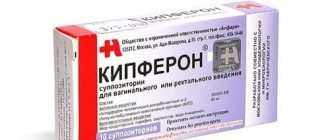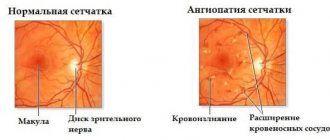Vitamin A
Vitamin A plays a critical role in vision by maintaining the clarity of the cornea, which is the outer layer of your eye.
This vitamin is also a component of rhodopsin, the protein in your eyes that allows you to see in low light conditions ().
Vitamin A deficiency is rare in developed countries, but if left untreated, it can lead to a serious condition called xerophthalmia.
Xerophthalmia is a progressive eye disease that begins with night blindness. If vitamin A deficiency continues, your tear ducts and eyes may dry out. Eventually, your cornea softens, leading to permanent blindness (,).
Vitamin A may also help protect against other eye diseases. Some studies suggest that diets high in vitamin A may be associated with a reduced risk of developing cataracts and age-related macular degeneration (AMD) (, , , ).
For overall eye health, it is recommended to consume vitamin A-rich foods rather than supplements. Good sources of vitamin A include: sweet potatoes, leafy green vegetables, pumpkin, carrots and bell peppers ().
Summary:
Severe vitamin A deficiency can lead to xerophthalmia, a serious condition that can lead to blindness. In some studies, high vitamin A intake was associated with a reduced risk of cataracts and age-related macular degeneration.
Vitamin E
Many eye diseases are thought to be related to oxidative stress, which is an imbalance between antioxidants and free radicals in your body (,).
Vitamin E is a powerful antioxidant that helps protect your cells (including your eye cells) from damage by free radicals—harmful, unstable molecules.
One seven-year study of 3,640 people with macular degeneration found that taking 400 IU of vitamin E and several other nutrients daily in a supplement called AREDS reduced the risk of advancing the disease by 25% ().
Additionally, some studies suggest that diets high in vitamin E may help prevent age-related cataracts. However, more research is needed as some studies show no link between vitamin E and this disease ().
Yet a diet that includes adequate amounts of vitamin E is recommended to maintain proper eye health. Some food options rich in vitamin E include nuts, seeds and vegetable oils. Salmon, avocado and leafy green vegetables are also good sources.
Summary:
Vitamin E is an antioxidant that can help protect your eyes from free radical damage. It is used in supplement form called AREDS as a potential treatment for macular degeneration, and high amounts of this vitamin in your diet may be associated with a reduced risk of developing cataracts.
What vitamins do the eyes need: beneficial and side effects
Our eyes need two types of vitamins - fat-soluble and water-soluble.
Fat-soluble ones include:
Retinol (vitamin a) . One of the components of the visual pigment rhodopsin, this vitamin plays a huge role in the visual process. This pigment is consumed when a light-sensitive cell (i.e. rod) is excited. That is why if there is not enough rhodopsin, this leads to a decrease in visual functions, for example, adaptation to darkness and decreased immunity, and this is fraught with barley and conjunctivitis.
Vitamin D, also known as calciferol , is needed for the transfer and absorption of calcium necessary for muscle contraction. A lack of calciferol leads to myopia.
Vitamin E, also called tocopherol , is necessary for stabilizing cell membranes; its antioxidant properties are widely known, thanks to which eye tissue is protected from the harmful effects of bright light and ultraviolet radiation.
Water-soluble include:
Thiamine (vitamin B) : needed for the transmission of nerve impulses in the optic nerves. It also promotes the formation of the enzyme cholinesterase, which reduces intraocular pressure. Without this enzyme, visual acuity decreases and intraocular pressure increases (this is the cause of glaucoma)
Riboflavin (vitamin B2) is also part of the visual pigment that protects the retina from ultraviolet radiation. A lack of this vitamin also leads to poor vision.
Nicotinic acid (vitamin B3) : eases the course of glaucoma, and also regulates higher nervous activity and improves blood circulation in the eye.
Pyridoxine (vitamin B6) : relieves inflammation of the optic nerve and eye strain.
Cyanocobalamin (B12) : has a positive effect on the optic nerve and its condition, prevents glaucoma. Saves from “aging eyes”
Vitamin C : needed for the blood vessels of the eyes, or rather to strengthen them.
Lutein . Refers to carotenoids. Among its unique properties is its resistance to light. Accumulating in the retina of the eye, it is able to create a light filter that protects the pigment epithelium from light rays, or rather, their harmful effects.
Lutein is also needed to inhibit free radicals in the pigment layer of the retina.
The human eye also needs elements such as zinc, selenium and copper.
Vitamin C
Like vitamin E, vitamin C is a powerful antioxidant that can protect your eyes from free radical damage ().
Vitamin C and several other nutrients are used in the AREDS supplement, which may benefit people with macular degeneration. One study suggests that taking this supplement daily may reduce your risk of developing this disease by 25% ().
In addition, vitamin C is necessary for the synthesis of collagen, a protein that provides structure to your eye, especially in the cornea and sclera ().
Several observational studies suggest that vitamin C may help reduce the risk of developing cataracts, a condition that causes your eye to become cloudy and reduce vision ().
For example, one observational study found a 75% reduction in the risk of developing cataracts when daily vitamin C intake was greater than 490 mg, compared with 125 mg or less ().
Another study found that regularly taking vitamin C supplements could reduce the risk of developing cataracts by 45% ().
Citrus and tropical fruits, bell peppers, broccoli, and kale contain especially high amounts of vitamin C, making them great options for increasing your daily intake.
For the best sources of vitamin C, check out this page – 20 Foods High in Vitamin C.
Summary:
Vitamin C forms collagen, a protein that provides structure to your eyes. Observational studies suggest that this vitamin may protect against cataracts and help prevent the progression of macular degeneration.
Blueberry complex, ginkgo - against dryness and redness
A full complex of vitamins, significant proportions of A, C and E. Increase immunity, restore vision functions. Relieves the feeling of dryness and sand. After taking it, excessive tearing disappears.
Saturates the body with antioxidants and minerals. Contains lutein, eyebright, blueberry, ginkgo.
Lutein is contained in the retina and saturates it; eyebright is used to prevent eye diseases. Blueberries relieve dryness and relieve intraocular pressure. Ginkgo Biloba normalizes brain function and promotes stable blood circulation.
Reviews about the choice of drug confirm a significant improvement in the well-being of patients. In addition to relief, vigor and energy appear throughout the day.
Price for Ai Herb from 1169 rub.
Vitamins B6, B9 and B12
Researchers also examined the effects of several B vitamins on eye health, especially vitamins B6, B9 and B12.
This combination of vitamins may lower the body's levels of homocysteine, a protein that may be associated with inflammation and an increased risk of macular degeneration ().
A clinical study in women who took 1,000 mcg of vitamin B12 along with vitamins B6 and B9 showed a 34% reduction in the risk of developing macular degeneration ().
However, more research is needed to confirm the benefits of these vitamins for eye health. Additionally, it is unclear whether increasing your intake of B vitamin-rich foods will provide similar benefits.
Summary:
A combination of vitamins B6, B9 and B12 may help reduce the risk of developing macular degeneration by lowering homocysteine levels.
Blueberry and Grape Skin Polyphenol Complex - a combination of powerful antioxidants
The components fight the development of dangerous cells in the body. Improves microcirculation in body tissues. Capillaries are strengthened and become less fragile. Protects against germs, inflammation, facilitates blood flow.
Both main ingredients work together, enhancing each other. Can be used as eye vitamins for a child.
According to reviews, the drug helps improve the health of the whole body. Increases immunity. Relieves dryness and irritation.
Price from 1329 rub.
Riboflavin
Another B vitamin being studied for eye health is riboflavin (vitamin B2). As an antioxidant, riboflavin has the potential to reduce oxidative stress in your body, including your eyes ().
In particular, scientists are studying the potential of riboflavin in preventing cataracts, since long-term riboflavin deficiency can lead to this disease. Interestingly, many people with cataracts are also deficient in this antioxidant (, ).
One study found that the risk of developing cataracts was reduced by 31-51% when participants included 1.6-2.2 mg of riboflavin in their daily diets compared to people receiving 0.08 mg per day ().
Health authorities recommend consuming 1.1-1.3 mg of riboflavin per day. Typically, this intake level is easy to achieve since many foods contain riboflavin. Some of the best sources of riboflavin are: oats, milk, yogurt, beef and fortified cereals ().
Summary:
As an antioxidant, riboflavin may protect your eyes from free radical damage. Diets with high levels of riboflavin intake are associated with a reduced risk of developing cataracts.
Eye tablets Optix (forte)
The vitamin complex Optix (Forte) is used to generally improve the quality of vision.
The product protects against drying out of the mucous membranes of the eyes, premature aging of the retina and the progression of dangerous pathologies.
A medicine based on carotenoids and mineral compounds has been developed.
The drug has antioxidant characteristics. The components of the drug filter the negative effects of intense radiation, which ensures increased functionality of the visual organs in elderly patients. It is not recommended to prescribe the medicine to children under 12 years of age and people with allergies to the components of the medicine.
For children
It is not recommended to prescribe the medicine to pediatric patients under 12 years of age, since the effect of the medicine has not been studied for them.
Interaction with other drugs
When prescribing complex therapy, it is necessary to take into account the mutual effects of Optix with other drugs:
- against the background of simultaneous use of several vitamin preparations, hypervitaminosis may develop;
- absorption of vitamin E is disrupted by mineral compounds of iron and silver;
- The simultaneous administration of the complex with laxative medications is not allowed.
Pregnancy and lactation
Pregnant women are prescribed medication only in case of urgent need, since the effect of Optix on this category of patients has not been fully studied. During breastfeeding, you should take vitamins only after consulting an ophthalmologist.
Reviews from doctors
Anna Anatolyevna, ophthalmologist: I prescribe the drug as part of complex therapy to saturate the body with the necessary vitamin and mineral compounds. I do not prescribe Optix for children or pregnant women. I especially often prescribe the product to older categories of patients in order to prevent age-related disorders in the area of the visual organs.
Ivan Olegovich, ophthalmologist: The complex not only saturates the body with vitamins, but also activates restoration processes in the area of the visual organs. I prescribe a medication to improve the visual function of elderly patients.
Consumer Reviews
Ilona: We prescribed vitamins after a long check at work. At night I had to do material behind a laptop monitor. My eyes began to water and I felt temporary blurred vision. The ophthalmologist prescribed Optix (Forte).
As the doctor said, the medication was prescribed to prevent various pathologies. It is worth noting that the result was visible after a couple of days of therapy. The eyes began to withstand longer periods of stress.
The tests went well, and I retained high clarity of vision.
Bogdan: Optix (Forte) was prescribed to prevent glaucoma. After completing the course, the discomfort in the visual area decreased significantly.
Niacin
The main function of niacin (vitamin B3) in your body is to help convert food into energy. It may also act as an antioxidant ().
Recently, research has shown that niacin may play a role in preventing glaucoma, a condition that damages the optic nerve in your eye ().
For example, an observational study of the nutrient intake of Korean adults and their risk of developing glaucoma found an association between low niacin intake and the condition ().
Additionally, an animal study found that high doses of niacin supplements were effective in preventing glaucoma ().
Overall, more research is needed into the potential link between niacin and glaucoma.
Supplements should be used with caution. When consumed in large quantities (1.5-5 g per day), niacin can cause adverse effects on the eyes, including blurred vision, damage to the macula, and inflammation of the cornea (,).
However, there is no evidence that eating niacin-rich foods causes any adverse effects. Some of the best food sources of niacin are: beef, poultry, fish, mushrooms, peanuts and legumes.
Summary:
Research suggests that niacin may inhibit the development of glaucoma, but supplements should be used with caution.
Optix instructions, indications, composition, side effects, prices in pharmacies
active ingredients:
1 tablet contains: β-carotene 1.5 mg; lutein 2.5 mg; zeaxanthin 0.5 mg; vitamin E 36 mg; vitamin C 225 mg; zinc 5 mg; copper 1 mg;
Excipients:
calcium sulfate, microcrystalline cellulose, stearic acid, croscarmellose sodium, magnesium stearate, colloidal anhydrous silicon dioxide, hypromellose (hydroxypropyl methylcellulose);
shell: film coating mixture Opadry II Yellow: hypromellose (hydroxypropyl methylcellulose), titanium dioxide (E 171), polydextrose, iron oxide yellow (E 172), maltodextrin, talc, medium chain triglycerides.
Film-coated tablets.
Basic physical and chemical properties:
round tablets with a biconvex surface, film-coated from light brown-yellow to brown-yellow.
Multivitamin preparations with other supplements.
ATX code A11A B.
Pharmacological properties
Pharmacodynamics.
A combined medicinal product containing vitamins, minerals and plant carotenoids.
Replenishes deficiency of vitamins and minerals. Has an antioxidant effect. The effect of the drug is due to the effects of the substances included in its composition.
Lutein and zeaxanthin
– specific carotenoids contained directly in the retina of the eye (the so-called “yellow spot”). The effect of these substances is due to their high antioxidant activity and ability to filter the harmful part of the light spectrum.
Lutein and zeaxanthin have an antioxidant, screening and absorption effect, reducing the risk of developing age-related disorders.
β-carotene
plays an important role in the construction of the visual pigment rhodopsin, which ensures the adaptation of the eye to low light, and also has an antioxidant effect.
Effect of vitamin C
– a water-soluble antioxidant – the preparation is combined with
vitamin E
, which protects cells and tissues from the damaging effects of excess free radicals and lipid peroxidation.
Copper
and
zinc
function as components of numerous metalloenzymes, catalyzing their action and preventing the formation of free radicals.
Features of application
The maximum effect of carotenoids is observed when taken with food containing fats (especially vegetable oils).
Do not exceed the recommended dose.
The medicinal product contains lactose and should not be used in patients with hereditary galactose intolerance, glucose-galactose malabsorption or lactase deficiency.
The drug is used with caution in patients with urolithiasis, cardiac decompensation, cholelithiasis, chronic pancreatitis, in patients with acute nephritis, with a tendency to thrombus formation. Do not use in patients with fructose intolerance.
The drug is not recommended to be prescribed with other multivitamins, since an overdose of the latter in the body is possible.
Use during pregnancy or breastfeeding.
During pregnancy or breastfeeding, the drug is used only in cases where, in the opinion of the doctor, the expected benefit to the mother outweighs the potential risk to the fetus/child.
The ability to influence the reaction rate when driving vehicles or other mechanisms.
Does not affect.
Directions for use and doses
The drug is taken orally during or after meals. Adults and children over 12 years of age are prescribed 1 tablet once a day for 2-3 months.
The maximum daily dose is 1 tablet. The duration of the course of treatment is determined by the doctor individually. If necessary, in the absence of a lasting effect, repeat courses are prescribed after consultation with a doctor.
Children.
The medicine is not used in children under 12 years of age.
Best before date
3 years.
Store in original packaging at a temperature not exceeding 25 ºС.
Keep out of the reach of children.
10 tablets in a blister; 6 blisters per pack
Over the counter.
JSC "KYIV VITAMIN PLANT".
The location of the manufacturer and the address of the place of its activities.
04073, Ukraine, Kiev, st. Kopylovskaya, 38.
Website: www.vitamin.com.ua.
Source: https://aptekin.com/%D0%BE%D0%BF%D1%82%D0%B8%D0%BA%D1%81
Lutein and Zeaxanthin
Lutein and zeaxanthin are part of the carotenoid family, a group of beneficial compounds synthesized by plants.
Both of these carotenoids are present in the macula and retina of your eyes, where they help filter potentially harmful blue light, protecting your eyes from damage ().
Several studies suggest that these plant compounds may inhibit the development of cataracts and prevent or slow the progression of macular degeneration (,).
A randomized controlled trial found potential benefits of lutein for people with cataracts. Over a two-year period, those who took supplements containing 15 mg of lutein three times a week experienced improved vision ().
Recommended daily intakes and safe doses have not been established for these compounds. However, doses of up to 20 mg of lutein per day for 6 months have been used in studies without side effects ().
However, supplements may not be necessary. As little as 6 mg of lutein and zeaxanthin can provide benefits, and a diet rich in fruits and vegetables provides this amount naturally. Cooked spinach, kale and collard greens are especially rich in these carotenoids ().
You can learn more about the benefits of lutein and zeaxanthin on this page - Lutein and zeaxanthin: benefits, consumption rates, products.
Summary:
Lutein and zeaxanthin are beneficial plant compounds that may help prevent macular degeneration and cataracts. No recommended daily intake has been established, but a diet high in fruits and vegetables can provide adequate amounts of these nutrients.
Vitamin preparations with lutein for the eyes
Many vitamin preparations contain lutein, which is a kind of light filter and antioxidant.
Lutein performs many functions: ensuring clarity of vision by filtering the spectrum, preventing clouding of the lens and destruction of the retina, preventing the accumulation of lipofuscin, which contributes to the development of retinal dystrophy. The risk of retinal damage is in direct proportion to the amount of lutein in it. With age, the density of lutein decreases, so there is a risk of retinal dystrophy, which ultimately leads to complete loss of vision. Therefore, it is urgently necessary to replenish the reserves of this pigment in the body.
Currently, lutein is present in many vitamin complexes for the eyes, such as “Vitalyuk-Plus”, “Visiobalance-Opti”, “Glazorol”, “Taurine”, “Leovit”, “Complivit-Ophthalmo”, “Doppelgerts Active with lutein” , “Lutein-Complex”, “Slezavit” and others.
The eye vitamins “Super-Optic” stand out especially because... they contain a relatively high dose of lutein. Due to this, they perfectly restore vision and provide long-term relief from symptoms such as fatigue, itching, redness and irritation.
"Lutein-Complex" is a combination of useful substances (lutein, vitamins, blueberry extract and microelements). It is designed to improve microcirculation and strengthen the capillaries of the eyes, slow down the progression of age-related defects in the visual organ, and also increase visual acuity in case of eye fatigue.
Due to their high lutein content, Doppelhertz vitamins are used to effectively restore vision after surgery. The disadvantage of these tablets is a side effect when taken on an empty stomach (nausea).
Omega-3 fatty acids
Omega-3 fatty acids are a type of polyunsaturated fat. The cell membranes of your retina contain high concentrations of DHA, a type of omega-3 ().
In addition to helping your eye cells form, omega-3 fats have anti-inflammatory properties that may play a role in preventing diabetic retinopathy.
A review of 31 studies found that diets high in fatty fish, such as the traditional Mediterranean diet, may protect against the development of diabetic retinopathy. While these results need to be confirmed by more research, they imply that a lack of fatty acids may be associated with the development of eye diseases such as diabetic retinopathy ().
Omega-3 fats may also benefit people with dry eye syndrome by helping them produce more tears. In this condition, the lack of tears causes dryness, discomfort and blurred vision (, ,).
To increase your intake of omega-3 fatty acids in your diet, include rich food sources such as fish, flaxseeds, chia seeds, soy and nuts. Omega-3s can also be found in vegetable oils such as olive oil or flaxseed oil.
You can learn more about omega-3 fatty acids on this page - Omega-3 fatty acids: what they are, their role, food sources.
Summary:
Omega-3 fatty acids have anti-inflammatory properties and may help prevent diabetic retinopathy when included in your diet. These fats may also help people with dry eyes.
Vitaminized eye drops
What drops to buy - eye vitamins - to improve vision?
Positive reviews from many who relieve eye strain after a working day spent at the computer pay attention to a drug such as Riboflavin. These are drops that contain B vitamins.
For eye irritation, cataracts, and corneal diseases, many people use the fortified drug in drops “Taufon”. It is a sulfur containing acid. Many people have noted the positive effect of these drops on quickly relieving inflammation and eliminating the feeling of dryness. These drops are often used by office workers during prolonged work at a computer monitor.
The most inexpensive and acceptable for many drops are “Vizin”. Allergy sufferers, office workers and welders speak positively about them, who struggle with watery eyes, irritation, redness, dryness and burns of the cornea.
Thiamine
Thiamine (vitamin B1) plays a role in proper cellular function and the conversion of food into energy ().
It may be effective in reducing the risk of developing cataracts (, ).
An Australian observational study of 2,900 people suggests that a diet high in thiamine reduces the risk of developing cataracts by 40%. This study also indicates that protein, vitamin A, niacin, and riboflavin may protect against cataracts ().
Moreover, thiamine has been proposed as a potential treatment agent in the early stages of diabetic retinopathy.
A clinical study found that 100 mg of thiamine taken three times daily reduced the amount of albumin in the urine, an indicator of diabetic retinopathy in type 2 diabetes ().
The best food sources of thiamine include whole grains, meat and fish. In addition, thiamine is often added to foods such as breakfast cereals, bread and pasta ().
Summary:
Diets high in thiamine have been associated with a reduced risk of developing cataracts. Thiamine supplementation has also been suggested as a treatment for diabetic retinopathy.
Eye protection from Synergy Company from heat, wind and cold
It contains a set of useful plants: broccoli, daikon, radish, etc. In addition, extracts: dandelion, black radish.
Products good for vision
The components have not been chemically treated. Thermal drying was used.
According to reviews, it relieves tension during fatigue. Protects from screen exposure and external interaction with the environment. The whites do not dry out, the pupils do not become cloudy, even when working with dust.
Price from 2909 rub.
Summarize
- Research shows that certain vitamins and nutrients may help prevent or slow the progression of several different eye diseases.
- If you suspect that you are deficient in any of these vitamins, you may want to consider increasing your intake of nutrient-rich foods or taking supplements.
- However, a balanced diet rich in fruits, vegetables, whole grains, proteins and healthy fats can provide your body with all the nutrients it needs for optimal health of your eyes and other parts of your body.
Tags: Eye health
- Related Posts
- What is beta-carotene, where is it found and how is it useful?
- What is colostrum? Benefits and harms, composition
- Vitamin B6: properties, uses, where it is found, side effects
« Previous entry
"Focus Forte"
A domestically produced additive with a similar composition is called “Focus Forte”. It contains the following components:
- blueberry extract;
- beta-carotene;
- lutein;
- zeaxanthin;
- vitamin A;
- vitamin B2;
- vitamin C;
- vitamin E;
- selenium;
- zinc;
- copper.
The cost of using Focus Forte is slightly lower than that of its analogues. It is 450 rubles. For this money you can buy a package containing 30 tablets.











